
bulk fermentation time comparison

I wanted to experiment different bulk fermentation times so I did a comparison test and prepared 3 identical doughs, following the exact same protocol; the only parameter that differed is the bulk fermentation time: 6h, 7h and 8h at 24C (75-76F) Here are the specifics: 100% hydration starter fully active / 80% AP flour +20% Whole rye flour -Overnight levain (12h at 22C / 71.6F) Ratio 1:10:10 -100% Sifted flour (High extraction La Milanaise) / 500g -75% hydration / 362g -Levain 20%/ 100g -Salt 2,2% / 12.1g - 1 hour autolyse - Add levain / rest 30mn - Add salt then mixing using the Rubeau method + slap and folds for 5-7mn - Rest 30mn / stretch and folds - Rest 30mn / stretch and folds - Rest 45 mn / Strong coil folds - Rest 60mn / coil folds - Shaping at the end of the BF (respectively 6h-7h and 8h after adding the levain to the autolysed dough) - I did my very best to shape the 3 doughs identically but obviously, it is easier said than done!! Fridge directly after shaping at 3C / 37.4F - Baked in dutch oven with lid for 20mn at 240C/464F then 25mn without lid at 220C / 428F (with a baking steel placed on the top shelf of the oven)- Time spent in the fridge before baking*: 6h-BF-dough = 19h - 7h-BF-dough = 17h - 8h-BF-dough = 16h - * Doughs 7h and 8h were baked at the same time whereas dough 6h had to wait 2 more hours in the fridge - The crumb of Loaf 6h clearly looks like a fool's crumb...Is it due to the time of fermentation or the shaping, in your opinion? But I cannot see a huge difference between loaf 7h and 8h..Maybe a more experienced eye could tell me which one is the closest to the most right-on-point fermentation?? The 3 loaves were absolutely delicious anyway! 6h bulk loaf: 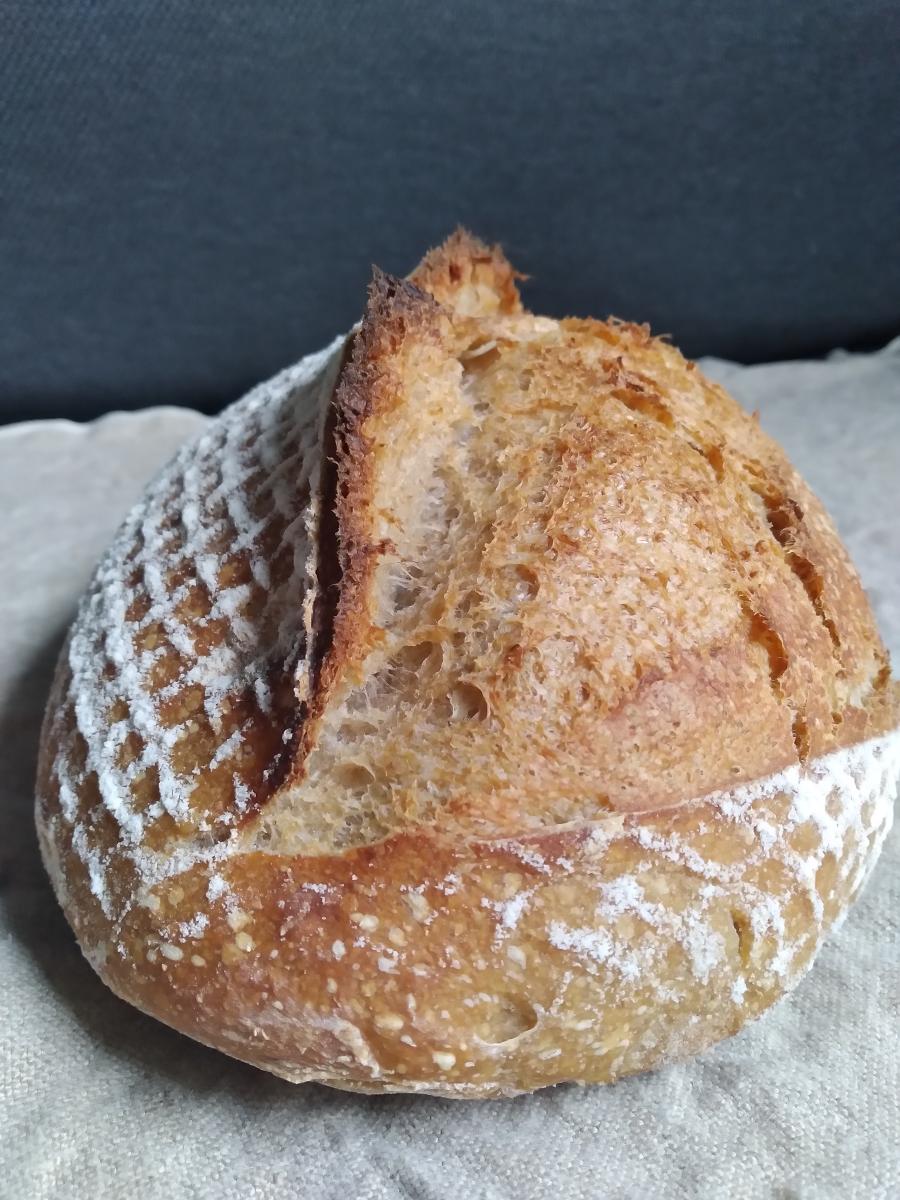
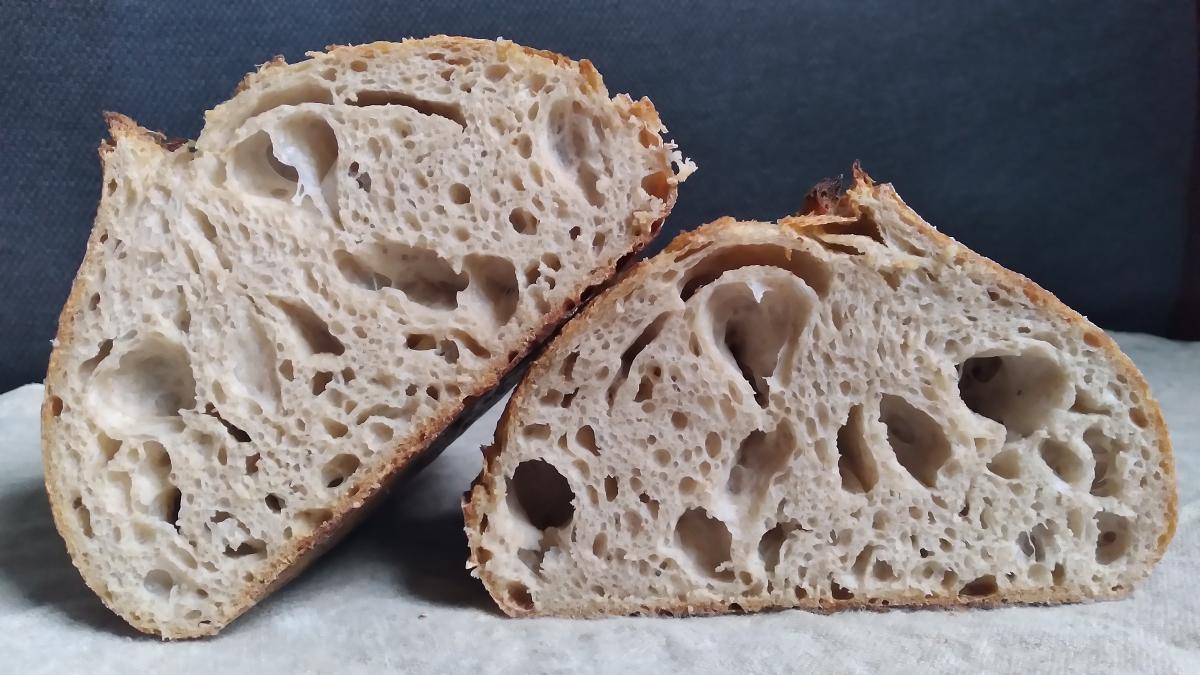 7h bulk loaf:
7h bulk loaf: 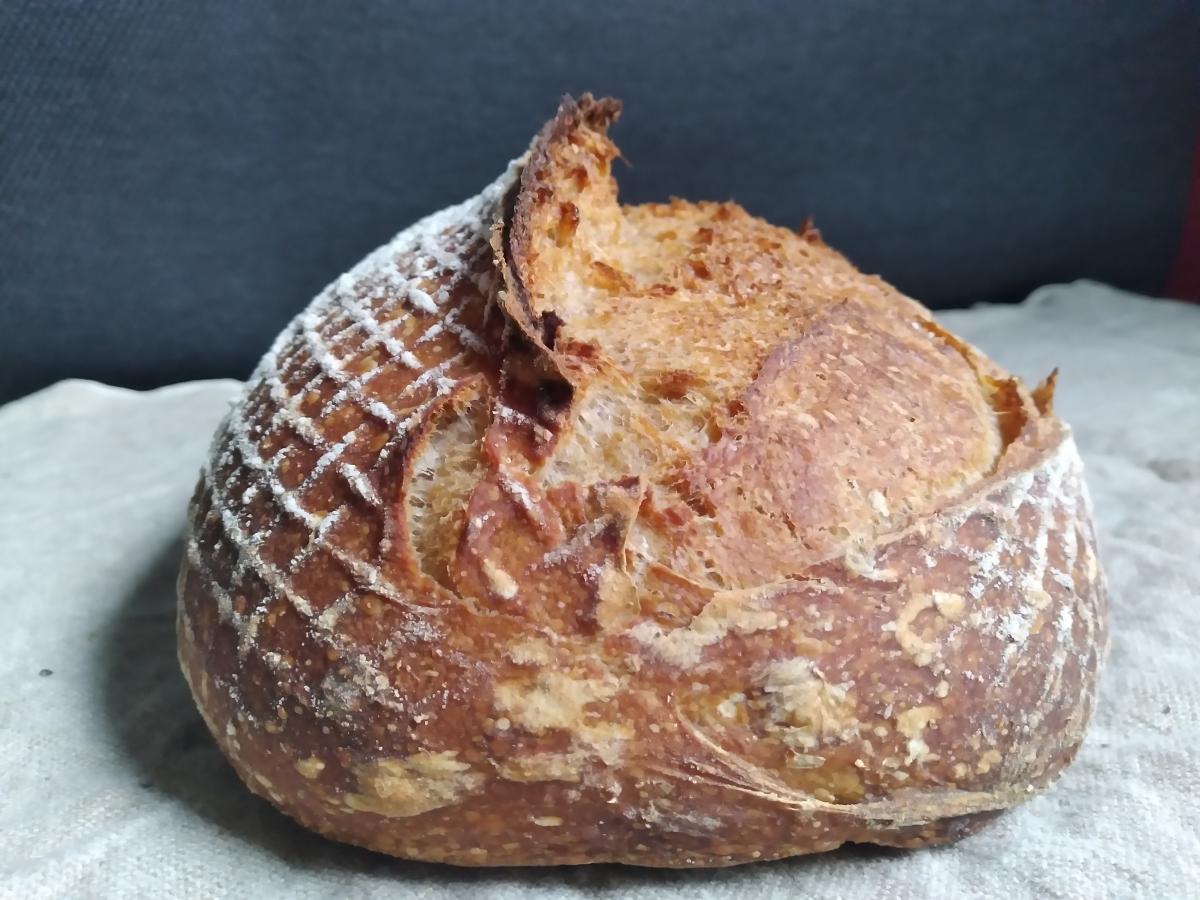
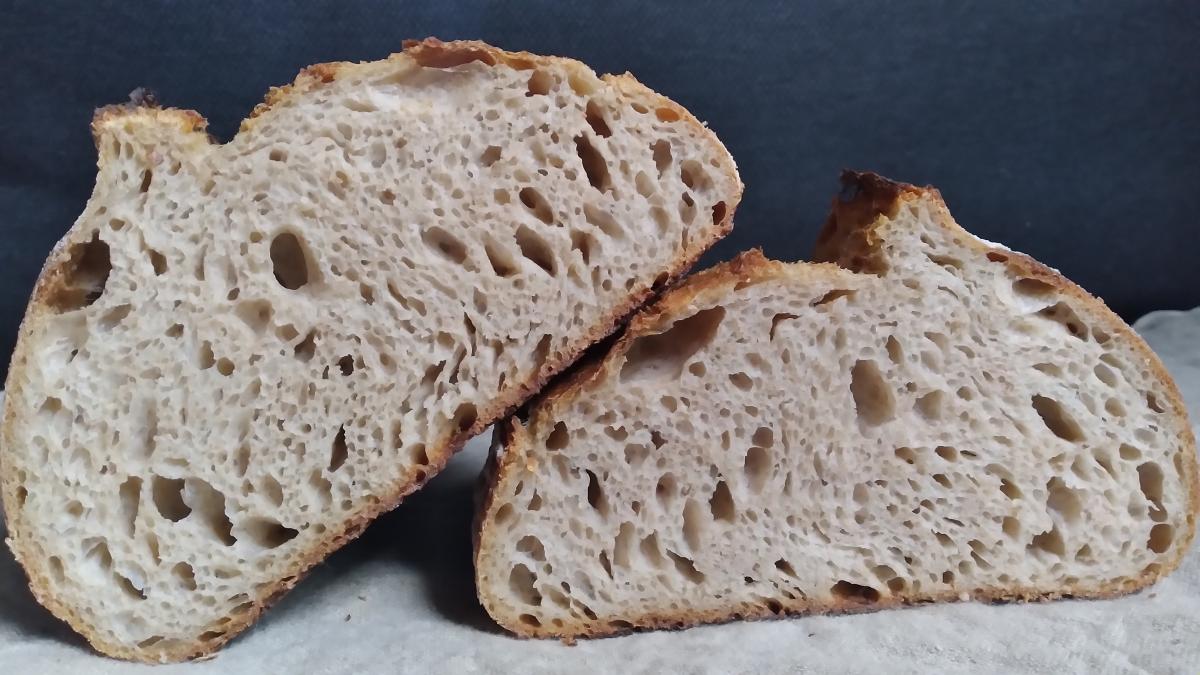 8h bulk loaf
8h bulk loaf 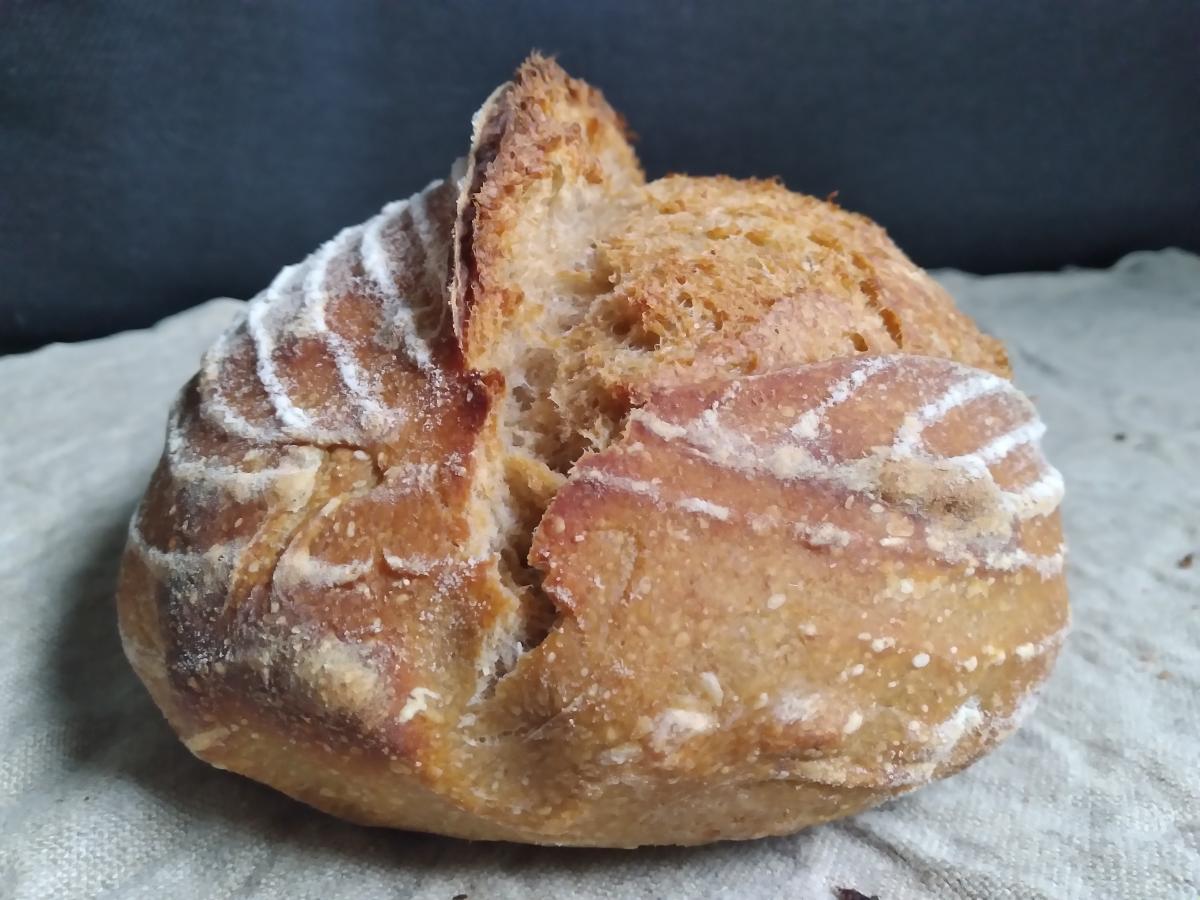
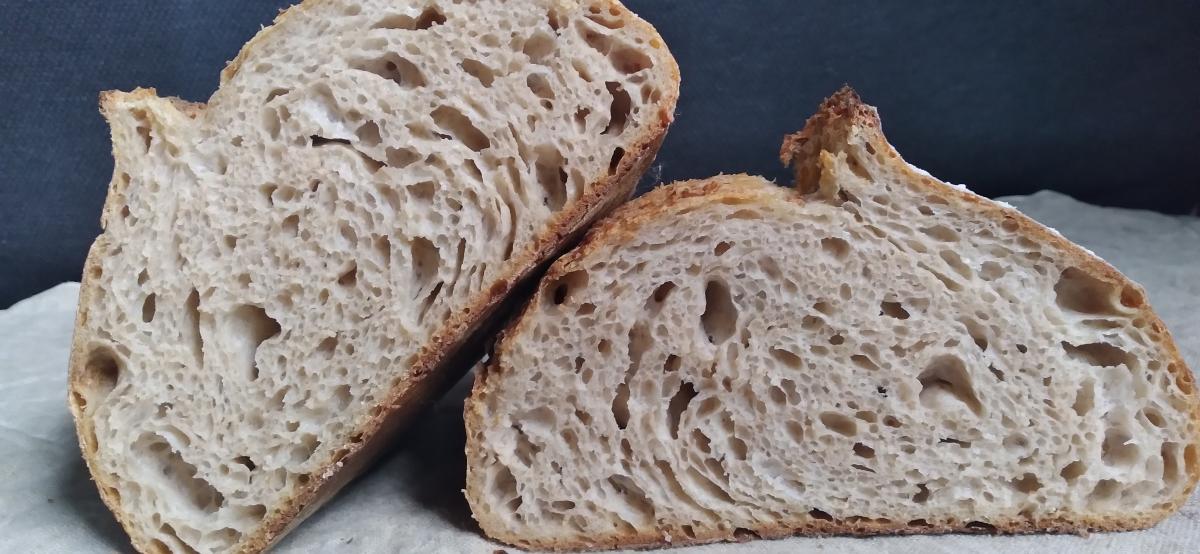 From left to right: 8h-7h-6h:
From left to right: 8h-7h-6h: 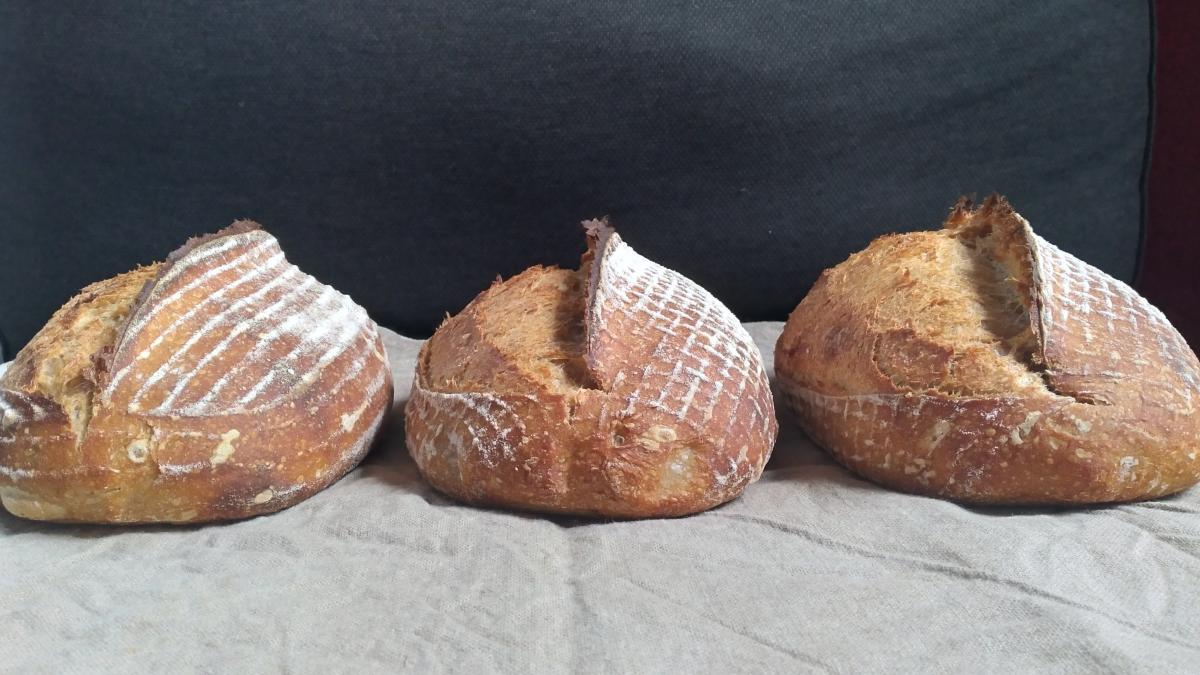
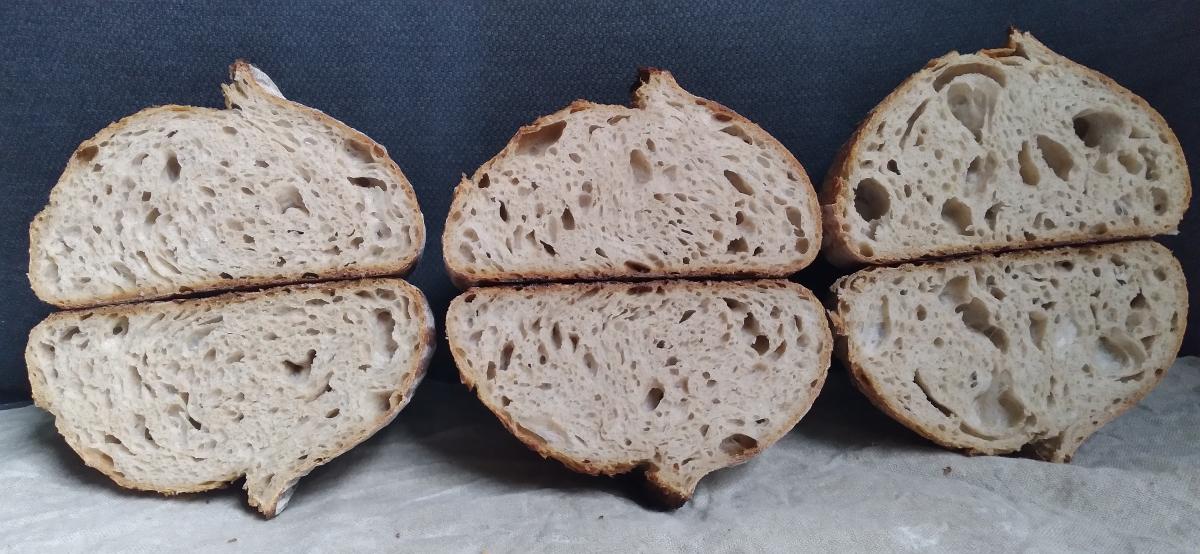


Very nice experiment! 6h is indeed clearly underfermented with large holes and some denser areas, although not terribly. I'd say 7 is OK, and 8 is spot on, at least for my preference.
I would have said 8h too, but wasn't sure...Thanks a lot Ilya!
I’d agree with Ilya, the 6h one is typical of underfermented dough, dense crumb with tunnels. 7h is fine, but I’d like a bit more fermentation since there are some slightly denser areas, while 8h looks great.
I really appreciate you giving me your thoughts on my loaves, thank you Benito!! This is extremely useful for me on my journey to finally understand what the crumb is trying to tell me!!!
Do you think I could push the fermentation even a bit further??
For that particular combination of flours in that dough, maybe a bit further. The only way you’ll know if you can is by trying and seeing if it ends up overproofed.
Benny
Haha, I just prepared 2 batches of dough to compare 8h vs 9h of bulk fermentation :-)
Excellent, great way of finding the ideal fermentation for your dough.
Here are the pictures of my 8h vs 9h experiment if you're curious to see the difference...I struggled a lot to shape the 9h loaf (very sticky and very fluid) so it might be the reason for the weird collapsing in the middle...I also cannot really tell if it's over-proofed or not, the crumb is kind of weird too...If you have any comments, please share as I would be more than happy to have your opinion!
8h bulk:
9h bulk:
9 is overproofed! Stickiness when shaping is a great indicator, and I think the big long alveoli along the crust are quite typical for overfermentation too. Also a more flat profile. If it wasn't problematic to shape it might not be so obvious and it doesn't look terrible to me, but taken together it's certain overfermentation.
Now you know your perfect bulk time! (assuming all the same conditions)
Thank you SO MUCH Ilya!!! Now I know indeed, and it's a nice feeling :-)
And it's so useful to now be able to interpret some typical signs in my crumb!!
:-)
The 9 hour loaf is just barely overproofed, I agree with Ilya. Stickiness of dough that wasn’t previously sticky is one sign that the gluten is starting to breakdown. I think I see some evidence of broken gluten strands just under the crust at the far left of the sliced loaf under the crust. However, as is typical of just overproofed loaves the rest of the crumb looks quite good, not dense.
Now you really know for this dough with its hydration and flours at the fermentation temperatures you used what ideal is! Well done, nice experiment.
Benny
It's really awesome to at last be able to read the crumb!!! At least in those last few loaves...Thank you so much Benito, your help has been invaluable in my SD bread baking journey!!!
I learned to read the dough over the past year as I was really pushing fermentation and trying to find the limits and frequently went over. Your experiments allows you to learn in a much shorter time than it look me!
Benny